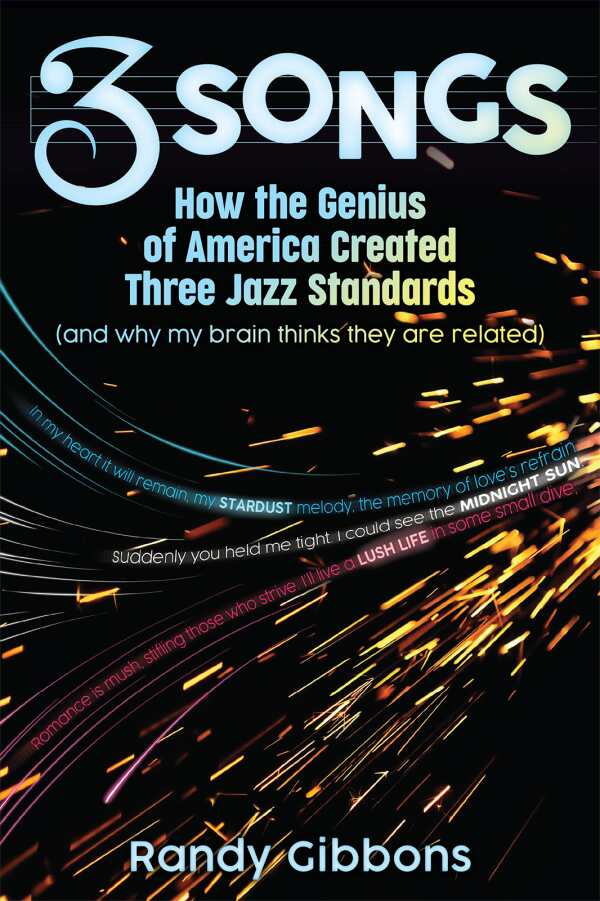3 Songs
How the Genius of America Created Three Jazz Standards (and why my brain thinks they are related)
3 Songs is a musing memoir–cum–cultural analysis through music.
Randy Gibbons’s autobiographical history of three jazz standards, 3 Songs, relates the songs to his own story, to their place in American history, and to each other.
In respective sections, Gibbons describes his relationships to “Stardust,” “Lush Life,” and “Midnight Sun.” The book also explores how the songs came about as compositions in the context of their composers’ lives and in connection to the music business. Each section concludes with musical and lyrical analyses. Subsequent segments detail recordings, what happened to the composers after the songs were released, and important locations and bands in the jazz tradition.
The book builds up a sense of behind-the-scenes production, addressing the trajectories of the songs’ creators and archiving important geographical and relational details. Quotes by or about the main players appear too. This panorama of associated impressions and threads is rather idiosyncratic, though, reflective of the belief that the tunes defy easy classification (“Midnight Sun” is called “crystal music,” for example).
Investing in the music and prioritizing narratives about it, the book’s tone is empathetic. Still, Gibbons’s personal enjoyment of the music defines the book’s bounds, as reflected in his explorations of his personal attachments to places connected to the music. He refers to correspondences with jazz scholars, even arguing with some, as well as with some written accounts by the composers themselves.
Gibbons describes the composers with curiosity: Here, Lionel Hampton is hard to define, Johnny Mercer is mercurial, and Billy Strayhorn is best understood in terms of his impoverished childhood. Their music is credited with enlivening bleak situations. And the book’s pace is momentous, panning in close to the musicians’ personal lives and single moments to shed light on broader cultural and political movements, including the Great Migration, the World Wars, and the growth of the radio, film, and television industries. Also highlighted are individual struggles against big corporations, as when Lena Horne, a friend of Strayhorn’s, fought her movie studio. Segues like “We’ll come back to that” help mark the book’s diversions from its chronological timeline.
Beneath the weight of its expansive material, the book’s throughline is lost. A recapitulation chapter is used to clarify the idea of the three songs as “accidental standards.” Still, the book’s expressions of wonderment at jazz as a unique American creation are not wholly unifying.
A personalized historical tribute to significant musical pieces, Three Songs muses over how American jazz shapes individual lives.
Reviewed by
Mari Carlson
Disclosure: This article is not an endorsement, but a review. The publisher of this book provided free copies of the book and paid a small fee to have their book reviewed by a professional reviewer. Foreword Reviews and Clarion Reviews make no guarantee that the publisher will receive a positive review. Foreword Magazine, Inc. is disclosing this in accordance with the Federal Trade Commission’s 16 CFR, Part 255.

